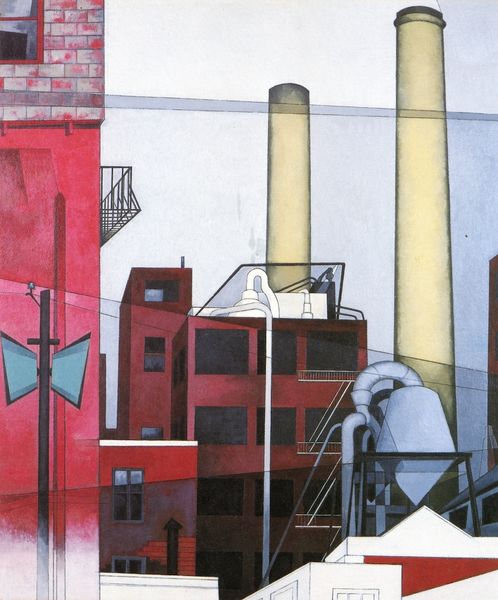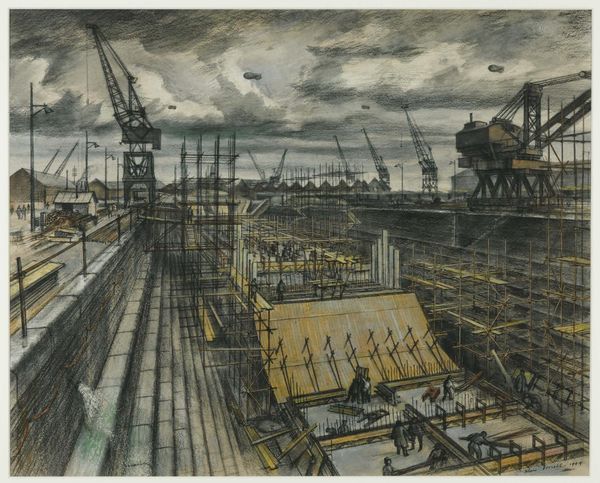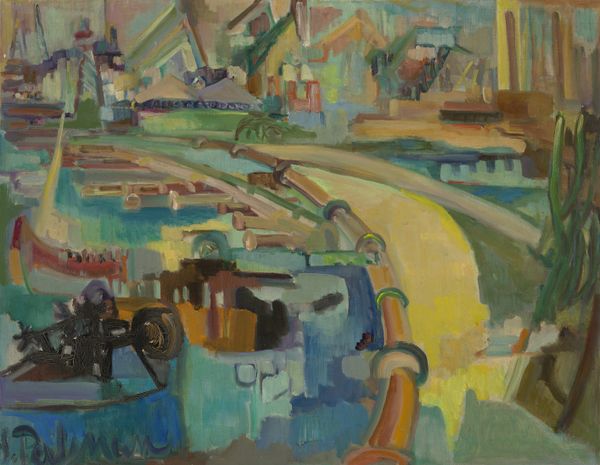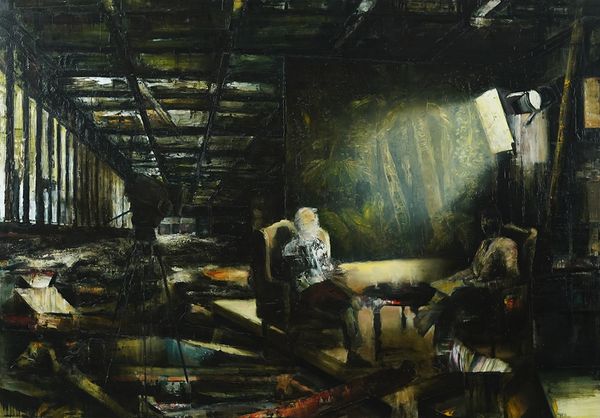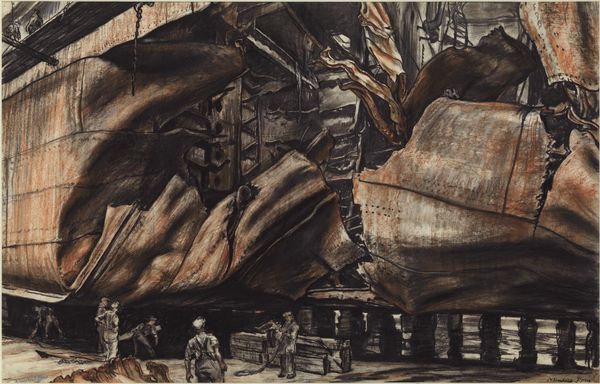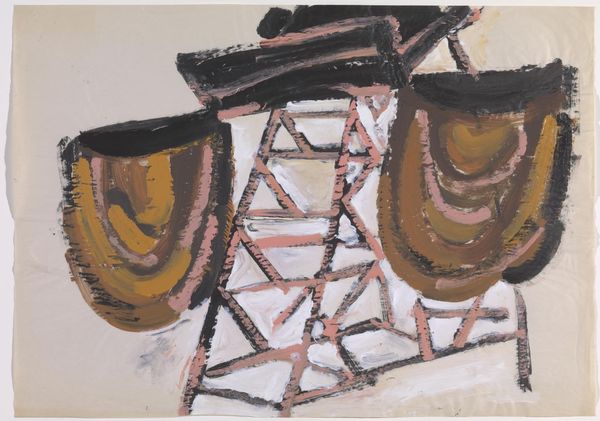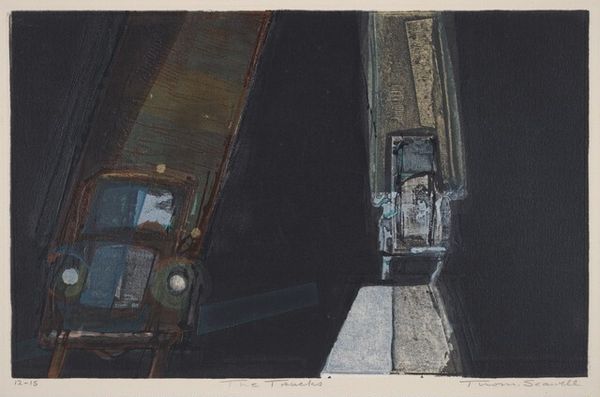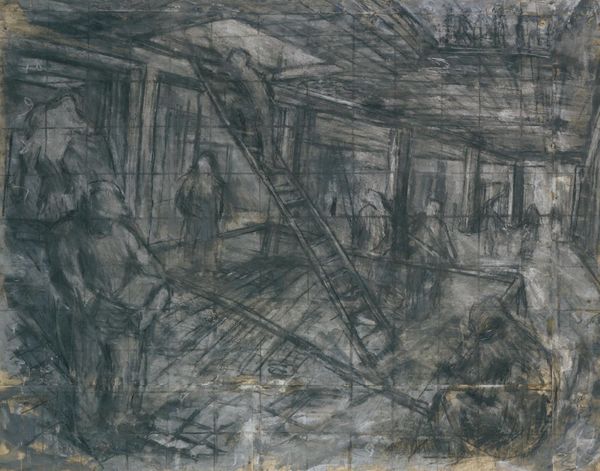
watercolor
#
landscape
#
soviet-nonconformist-art
#
oil painting
#
watercolor
#
cityscape
#
watercolor
#
realism
Copyright: Petros Malayan,Fair Use
Curator: Petros Malayan, painted this piece titled “Kamaz Containers in the Port" in 1973. The artwork presents an industrial landscape, quite bleak in its atmosphere, rendered primarily in watercolor. What’s your take on it? Editor: Well, the first thing that strikes me is the stark contrast between the angularity of the containers and the soft washes of watercolor. The restricted palette contributes to this somewhat desolate mood. The eye jumps to those cylindrical shapes upfront almost as if we are invited to look into a telescope or drainage. Curator: That bleakness is precisely what intrigues me. Painted during the Soviet era, it hints at the monumental scale of industrialization, but it's presented in such an unglamorous way. Note how Malayan avoids the typical heroic portrayal of labor and industry, choosing instead to focus on the sheer volume of containers waiting in the port, perhaps suggesting themes of stagnation or unseen bureaucratic processes. Editor: I see your point about the absence of overt heroism. However, the way Malayan handles light and shadow—see how the structures almost melt into each other– gives this industrial scene an undeniable graphic quality, in particular where one rectangular container obstructs a circular container and its support legs. There’s something beautiful in how the composition guides your eye through layers of form and depth. Curator: I agree, his treatment of color certainly subverts any expectations. By the 1970s, many Soviet Nonconformist artists were intentionally turning away from the celebratory socialist realism promoted by the state, searching for authenticity by documenting everyday life. This port scene might be interpreted as the truth of this society, and a counterpoint to idealistic, state-sanctioned art. Editor: Yes, I suppose it could also be a matter of perspective. Malayan may very well be drawn to what could be deemed a ‘monstrous’ sight by someone unfamiliar with this industrial landscape, because there is, as you say, a quiet observation that dominates the scene. It feels almost voyeuristic. Curator: Perhaps. Art allows for all those layers of understanding. These industrial containers can be viewed as emblems of a historical and political period. It seems that in its visual restraint, Malayan challenges us to rethink our assumptions about work, productivity and the environment of Soviet cities. Editor: Indeed. I think analyzing both the composition and context brings deeper insight. Malayan's masterful use of watercolor turns an ordinary dockyard into something that holds one's attention, to encourage close inspection.
Comments
No comments
Be the first to comment and join the conversation on the ultimate creative platform.
